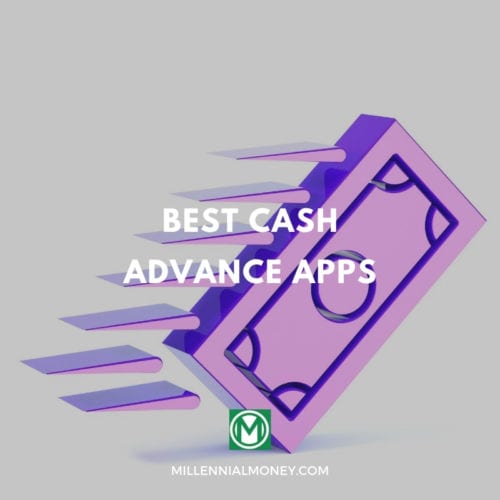Direct lending is becoming increasingly popular due to the higher interest rates it can yield for investors. In its basic form, direct lending involves providing credit directly to small and mid-sized businesses that use the money for expansion.
Keep reading to learn all about how direct lending works, the different types of options and companies on the market, and how to potentially benefit from it.
- Direct Lending: An Overview
- The Role Investors Play
- How Direct Lending Works
- How to Invest with Direct Lending
- The Pros and Cons of Direct Lending for Investors
Direct Lending: An Overview
Following the 2008 financial crisis, many banks stopped lending to lower and middle-market companies in favor of large corporations with stronger cash flows and collateral. The sluggish economy and new regulations made it very difficult for small, private companies to receive mission-critical loans.
This gave rise to direct lending, a strategy in which private lenders — or non-banks — make loans to companies while avoiding intermediaries. Non-bank lending is similar to private equity, as it involves raising funds from outside investors.
Direct lending is appealing for many companies because it avoids regulatory restrictions. That means direct lenders don’t have to meet stringent lending qualifications. Through direct lending, it’s fast and easy for small organizations to build capital structure.
As such, direct lending is expected to remain in high demand for the foreseeable future. If nothing else, it’s an interesting option for investors who want to diversify their asset allocation by injecting capital into other businesses.
The Role Investors Play
Investors fuel the direct lending process by issuing capital to third-party fund managers or platforms, helping to finance private loans. Direct lending funds may also draw capital from business development companies and asset management firms.
When you issue funding as an investor, you can help fund part or all of a loan, with the goal of earning strong and consistent returns from higher-than-average interest rates.
In exchange, there are some fees to consider. For example, direct lending often comes with an incentive fee, calculated based on the fund’s performance over time. In addition, investors often likely have to pay a management fee when working with a direct lender.
It’s critical to read a fund’s prospectus before getting started to understand the various fees that will come into play throughout the course of the loan. Watch out for early termination fees and exit fees if you decide to reclaim your capital. Pricing should also be a big determining factor when selecting a direct lending provider.
How Direct Lending Works
In most cases, a direct lender raises money from a network of investors and partners. After securing funding, the lender will approach a potential borrower and make a leveraged loan offer. If you’re new to this term, a leveraged loan is simply a commercial loan funded by multiple investors.
There are three ways a direct lender may offer a loan to a borrower:
1. First lien
In a first lien agreement, the borrower agrees to pay off the loan before paying off all other debt classes.
2. Second lien
A second lien agreement requires paying off a loan after a senior lien or a claim on a property.
3. Unitranche debt
With a unitranche agreement, senior and junior debt combine into a single loan with a mixed interest rate and a predictable repayment schedule.
Is direct lending the same as private debt?
In a direct lending agreement, an asset manager sells the loan to many different investors. In a private debt arrangement, a single investment bank funds the loan.
Private debt also deals with a much wider range of financing, such as distressed debt and mezzanine financing.
How to Invest With Direct Lending
There are two ways to begin a direct lending investment strategy. You can either work with a direct lending provider who handles the process end-to-end or source borrowers yourself using a peer-to-peer lending service.
Working with a direct lending provider
The most common approach involves partnering with a direct lending provider. Again, this option requires paying fund management and incentive fees. However, the tradeoff is that management teams handle all the legwork of sourcing and vetting the borrower and managing the relationship. All you have to do as the investor is provide funding.
Top direct lending providers for 2021
The following companies offer direct lending opportunities for investors, with qualifications varying from provider to provider. Be sure to check with the provider in advance to determine eligibility.
Apollo
Apollo launched Apollo Strategic Origination Partners in 2020. The platform aims to provide roughly $12 billion in finance over the next three years to help meet corporate demand for direct origination.
Blackstone
Blackstone offers loans that are privately originated, senior secured, and with floating rates to middle-market companies across the U.S. and Europe.
Blackstone also recently announced Blackstone Private Credit Fund (BCRED), a non-listed business development company (BDC) offering individual investors access to private credit through a continuously offered fund structure.
Oaktree Capital
Oaktree is a leading alternative investment management firm with a long history extending back to 2001. Today, the company issues senior and junior loans to a wide variety of private equity or independent companies.
Intermediate Capital Group
Intermediate Capital Group (ICG) invests in senior secured and subordinated debt instruments for companies throughout Europe.
Investing through P2P
The other option is to bypass large fund providers and go through peer-to-peer (P2P) investment service providers.
P2P lending — or crowdsourcing — is becoming increasingly popular because it makes investing faster and easier than working with fund managers. Most P2P direct lending apps come with a robust platform that matches you directly with individual investors and business owners.
As an investor, you can typically access a variety of metrics before deciding whether to invest in the organization. Then, when you find a match, you can usually fund a portion or all of the investment.
P2P providers also have varying eligibility requirements, so it’s essential to check with the platform before getting started.
Top P2P providers
Peerform
Peerform offers attractive and steady returns and advanced analysis. The platform is for institutional investors or organizations that invest on behalf of their clients like hedge funds, mutual funds, and pension funds.
Prosper
Prosper is a leading P2P app for on-the-go direct lending. It has a minimum investment of just $25, making it one of the more accessible solutions for beginners.
PeerStreet
PeerStreet is another great P2P platform that exclusively serves the real estate market. This platform can connect you with real estate entrepreneurs who need financing to secure real estate investments. You can invest directly in real estate loans, for predictable income.
PeerStreet isn’t technically a direct lender. Rather, it’s a secondary market for loans from other lenders.
The Pros and Cons of Direct Lending for Investors
Pros
- No regulatory restrictions = more flexible for investors and borrowers
- Investors can access higher interest rates
- Potential for strong, consistent returns
- Eliminates traditional intermediaries
Cons
- Unregulated lending increases risk for investors
- Potentially high early termination fees
- Riskier than traditional investing
Top Direct Lending Books to Explore
Private Debt: Opportunities in Corporate Direct Lending by Stephen L. Nesbitt
Private Debt: Opportunities in Corporate Direct Lending is a great resource for investors who are considering exploring this strategy. Give this a read if you want a crash course in private debt.
Private Capital Investing: The Handbook of Private Debt and Private Equity by Robert Ippolito
Private Capital Investing is a manual on private equity and private debt. Check out this book if you want to learn how professional analysts consider investment opportunities.
Peer-To-Peer: P2P Lending For Beginners! How to Profit & Build Wealth With Small Loans by Charles Zone
P2P Lending for Beginners is a great introduction to P2P lending, including investing guidelines for beginners.
Frequently Asked Questions
Here are the most frequently asked questions about direct lending.
What is EBITDA?
EBITDA stands for earnings before interest, taxes, depreciation, and amortization. This metric indicates a company’s overall financial performance and profitability, making it one of the most important things to pay attention to when deciding whether to issue a loan.
Of course, a lot more goes into a company’s performance than just EBITDA. It’s critical to see the entire picture before issuing capital and agreeing to a loan.
Is direct lending for short-term investments?
While there are all types of lending agreements, most businesses access direct lending for short-term financing for liquidity when transferring ownership, completing a buyout, or bringing a new product to market.
Direct lending is usually the fastest and easiest way to access capital to fund these types of projects, which is why the strategy is becoming more and more popular among small and medium-sized organizations.
Is direct lending risky for investors?
All investing is inherently risky, and direct lending is certainly no exception. Investors face double risk from both fund managers and companies. In fact, poor fund management is one of the leading causes why investors lose money with direct lending.
Ultimately, there’s never a guarantee when it comes to investing. That’s why it’s critical to thoroughly research a fund before issuing any type of loan. And as an investor, you need to have a clear understanding of your risk tolerance and avoid putting in more money than you can afford to lose at any given time.
The Bottom Line
The direct lending market is something investors should know about. As with most investment opportunities, the debt market is risky. But opportunities abound in this asset class. Providing funding for debt financing through direct loans could potentially lead to strong returns.
Before getting started, conduct a financial gut check and make sure you’re in a strong position to issue these types of loans. Run through your investment portfolio and gain a high-level overview of where your various investments already exist.
You may find that your portfolio is already carrying substantial risk. Or you may find that expanding into a new asset class makes perfect sense for your strategy.
Remember: This type of lending is just one of countless investing strategies to consider. So here’s to building your well-diversified portfolio as you push toward financial independence each day.





No comments yet. Add your own